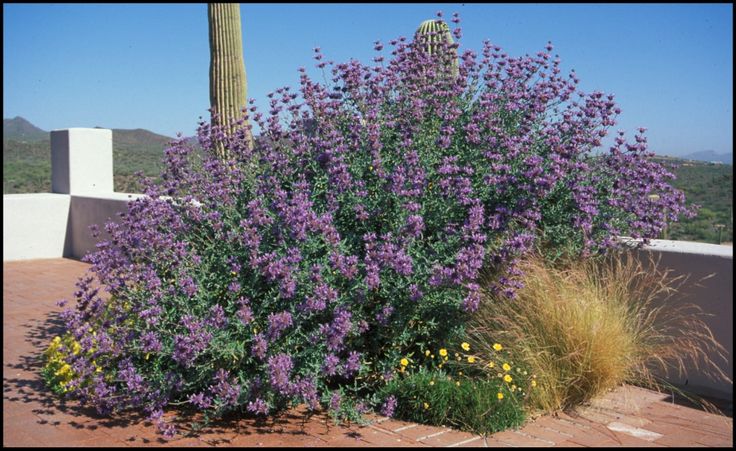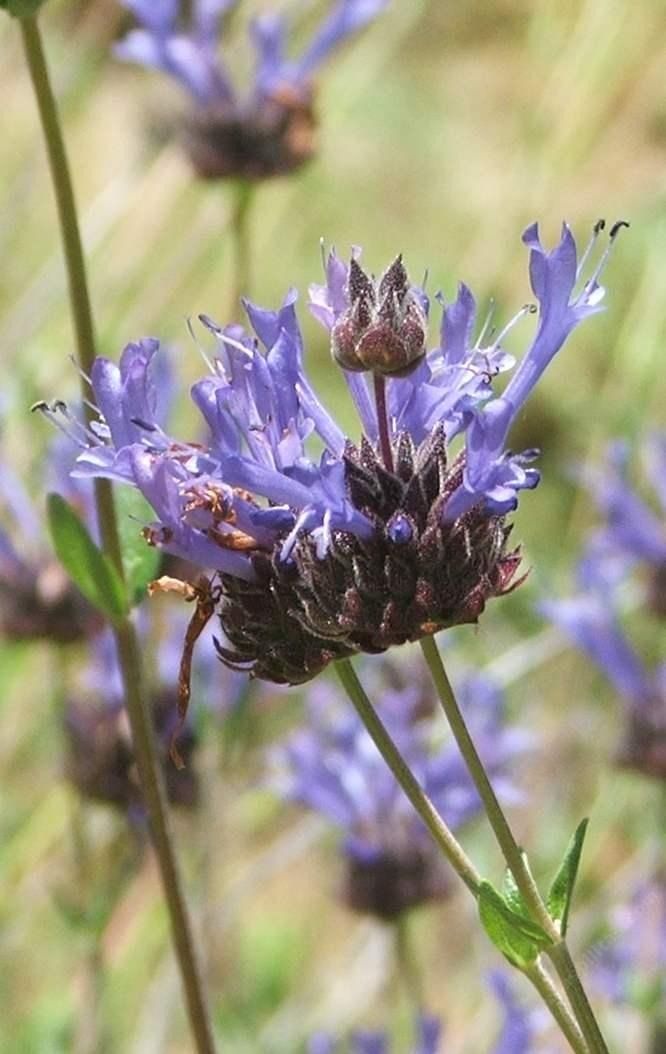Salvia clevelandii

Salvia clevelandii, commonly known as Cleveland Sage, is a captivating native plant species found in the coastal regions and inland areas of California.
Renowned for its fragrant foliage, striking flowers, and ecological value, Cleveland Sage holds a special place in both natural landscapes and cultivated gardens.
In this comprehensive article, we will explore the botanical intricacies, habitat preferences, life cycle and care guidelines for Salvia clevelandii.
Botanical Description
Cleveland Sage is a drought-tolerant evergreen shrub characterized by its aromatic leaves, dense growth habit, and spikes of lavender-blue flowers.
The plant typically grows to a height of 3 to 5 feet (0.9 to 1.5 meters) and features woody stems covered in gray-green foliage.
The leaves are lance-shaped, gray-green in color, and highly aromatic when crushed, emitting a pleasant sage-like scent.
In late spring to early summer, Cleveland Sage produces tall, slender flower spikes adorned with small, tubular flowers in shades of lavender-blue.
These flowers are highly attractive to bees, butterflies, and other pollinators. Making Cleveland Sage a valuable addition to pollinator gardens and wildlife habitats.
Habitat and Distribution
Cleveland Sage is native to the coastal sage scrub and chaparral habitats of California, where it thrives in well-drained, sandy or rocky soils.
It is often found growing on hillsides, canyons, and roadsides. In which it is well adapted to the Mediterranean climate of California, characterized by hot, dry summers and mild, humid winters.
Cleveland Sage is particularly abundant in the southern coastal regions of California, including San Diego County and the Channel Islands. Where it plays a crucial role in stabilizing soils, providing habitat for wildlife, and enhancing biodiversity.
Life Cycle and Phenology
As an evergreen shrub, Cleveland Sage maintains its foliage year-round, providing color and texture in the landscape throughout the seasons.
Flowering typically occurs in late spring to early summer, with peak bloom periods varying depending on local climate conditions.
Birds and other animals disperse the small, brown seeds that develop after the flowers.
Cleveland Sage may experience periods of summer dormancy during hot, dry conditions, conserving water and energy until cooler, wetter conditions return in the fall.
Ecological and Cultural Importance
Cleveland Sage plays a significant ecological role as a habitat provider, food source, and soil stabilizer in California's native plant communities.
The aromatic foliage provides cover and nesting sites for birds and small mammals. While the flowers attract a wide range of pollinators, including bees, butterflies, and hummingbirds.
Additionally, people value Cleveland Sage as a symbol of California's native flora and cherish its culinary and medicinal uses.
Landscapers and horticulturists often use it for its ornamental value, drought tolerance, and low maintenance needs.

Caring for Salvia clevelandii
Sunlight
Plant Cleveland Sage in a location that receives full sun or partial shade. This is because it prefers plenty of sunlight for optimal growth and flowering.
Watering
Provide regular water during the establishment period, then gradually reduce watering once the plant is established.
Cleveland Sage is drought tolerant once established and prefers well-drained soil.
Soil
Plant in well-drained, sandy or loamy soil with a neutral to slightly alkaline pH.
Cleveland Sage is adaptable to a variety of soil types but may struggle in heavy clay soils.
Pruning
Prune lightly after flowering to maintain a compact shape and remove dead or damaged branches.
Cleveland Sage can be pruned to encourage bushier growth and enhance its ornamental appearance.
Mulching
Apply a layer of organic mulch, around the base of the plant to help retain soil moisture and suppress weeds.
Avoid covering the stems or foliage with mulch, as this can lead to rot and disease.
By following these care guidelines, you can cultivate healthy and vibrant Cleveland Sage plants in your garden or landscape, contributing to the conservation of native plant species and the beauty of California's natural landscapes.
Whether grown as a specimen plant, hedge, or wildlife habitat, Cleveland Sage is sure to enchant with its fragrant foliage, vibrant flowers, and ecological importance.
Leave a Reply
You must be logged in to post a comment.